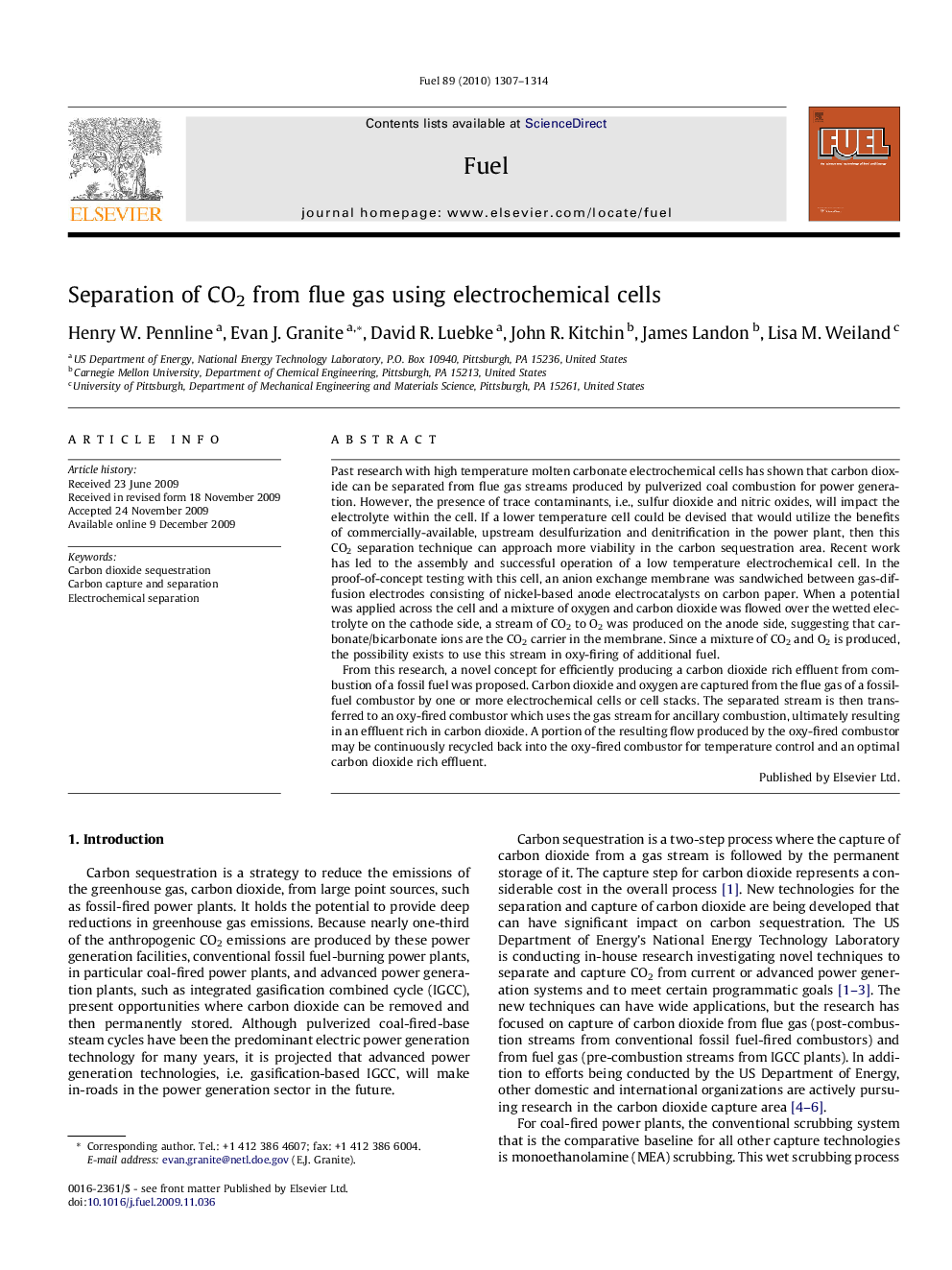| کد مقاله | کد نشریه | سال انتشار | مقاله انگلیسی | نسخه تمام متن |
|---|---|---|---|---|
| 207247 | 461210 | 2010 | 8 صفحه PDF | دانلود رایگان |

Past research with high temperature molten carbonate electrochemical cells has shown that carbon dioxide can be separated from flue gas streams produced by pulverized coal combustion for power generation. However, the presence of trace contaminants, i.e., sulfur dioxide and nitric oxides, will impact the electrolyte within the cell. If a lower temperature cell could be devised that would utilize the benefits of commercially-available, upstream desulfurization and denitrification in the power plant, then this CO2 separation technique can approach more viability in the carbon sequestration area. Recent work has led to the assembly and successful operation of a low temperature electrochemical cell. In the proof-of-concept testing with this cell, an anion exchange membrane was sandwiched between gas-diffusion electrodes consisting of nickel-based anode electrocatalysts on carbon paper. When a potential was applied across the cell and a mixture of oxygen and carbon dioxide was flowed over the wetted electrolyte on the cathode side, a stream of CO2 to O2 was produced on the anode side, suggesting that carbonate/bicarbonate ions are the CO2 carrier in the membrane. Since a mixture of CO2 and O2 is produced, the possibility exists to use this stream in oxy-firing of additional fuel.From this research, a novel concept for efficiently producing a carbon dioxide rich effluent from combustion of a fossil fuel was proposed. Carbon dioxide and oxygen are captured from the flue gas of a fossil-fuel combustor by one or more electrochemical cells or cell stacks. The separated stream is then transferred to an oxy-fired combustor which uses the gas stream for ancillary combustion, ultimately resulting in an effluent rich in carbon dioxide. A portion of the resulting flow produced by the oxy-fired combustor may be continuously recycled back into the oxy-fired combustor for temperature control and an optimal carbon dioxide rich effluent.
Journal: Fuel - Volume 89, Issue 6, June 2010, Pages 1307–1314